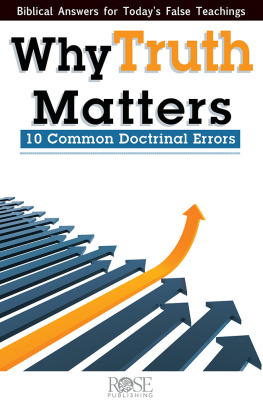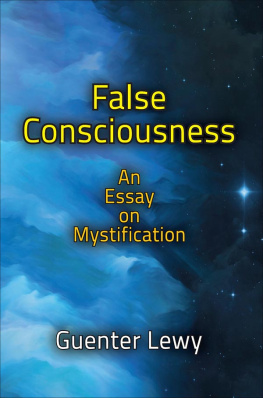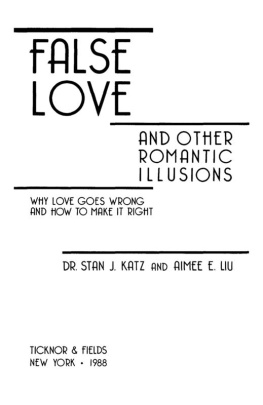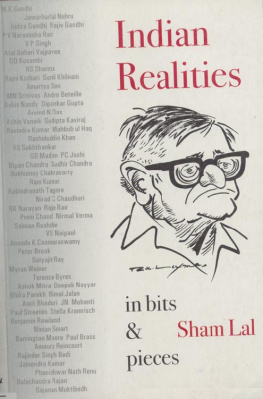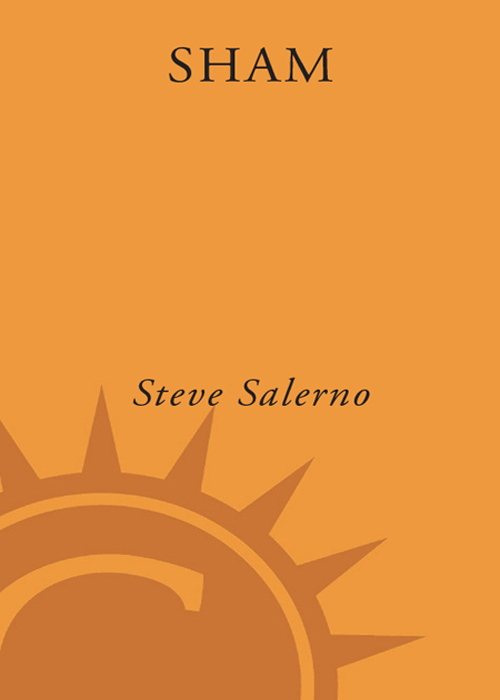
SHAM

How the Self-Help Movement
Made America Helpless

STEVE SALERNO

CROWN PUBLISHERS
NEW YORK
CONTENTS

THE CULPRITS
THE CONSEQUENCES
To Mom and Dadand the other members of
their generation who, thank God, were codependent
enough to put their kids first.

Introduction

HOPELESSLY HOOKED ON HELP
Its okay to eat meatloaf.
Sample inspirational thought from
Its Okay to Be Happy, by J. F. Mulholland
Compared to the possibilities in life, the impossibilities are vastly more numerous. What I dont like to hear adults tell people your age is that you can be president or anything else you want to be. Thats not even remotely true. The truth is that you can run for president, and thats all.... In our wonderfully free society, you can try to be just about anything, but your chances of success are another thing entirely.
Marilyn vos Savant,
recognized by the Guinness Book of World Records
for Highest IQ, responding to a young persons letter
in her Parade column, March 2, 2003
In twenty-four years as a business writer and an investigative journalist, I have covered all kinds of money stories. I have written about boondoggles on bankers row and sleight of hand at Seventh Avenue fashion houses. Ive written about the gyrations of the stock market as well as the myriad forces that surround, yet never quite explain, investing itself. Ive written about money as it relates to sales, money as it relates to sports, money as it relates to music, money as it relates to love. Its safe to say that if it involves money, combined with some form of human aspiration, Ive probably written about it.
Never, during all that time and reporting, have I encountered an industry whose story reads quite like the one at the heart of this book. Its a story that represents the ultimate marriage of money and aspiration (although the money invested so exceeds the fulfillment of the aspirations that the marriage probably should be annulled). Never have I covered a phenomenon where American consumers invested so much capital in every sense of the wordfinancial, intellectual, spiritual, temporalbased on so little proof of efficacy. And where they got such spotty, if not nonexistent, returns.
For more than a generation, the Self-Help and Actualization Movementfelicitously enough, the words form the acronym SHAMhas been talking out of both sides of its mouth: promising relief from all that ails you while at the same time promoting nostrums that almost guarantee nothing will change (unless it gets worse). Along the way, SHAM has filled the bank accounts of a slickly packaged breed of false prophets, including, but by no means limited to, high-profile authors and motivational speakers, self-styled group counselors and workshop leaders, miscellaneous life coaches, and any number of lesser wise-men-without-portfolio who have hung out shingles promising to deliver unto others some level of enhanced contentment. For a nice, fat, nonrefundable fee.
Self-help is an enterprise wherein people holding the thinnest of credentials diagnose in basically normal people symptoms of inflated or invented maladies, so that they may then implement remedies that have never been shown to work. An entire generation of baby boomers searching desperately for answers to the riddle of midlife has entrusted itself to a select set of dubious healers who are profiting handsomely, if not always sincerely, from that desperation.
The self-help movement has not been a wholesale failure. Surely it provides some help to some people (albeit no more so than sugar pills provide help to some patients in controlled studies of investigational drugs). Here and there a marriage is saved, a parenting dilemma solved, a mental-health problem identified and eventually corrected as a result of advice imparted in a self-help product. Here and there. But for the most part, SHAM does not do what it promises. It is the emperors new life plan.
Thats actually being charitable about it. To describe SHAM as a waste of time and money vastly understates its collateral damage. To date, the industry has escaped intense scrutiny because even those who doubt its effectiveness regard self-help as a silly but benign pursuit, an innocuous vice that plays to the Jerry Springer set, and even then is taken to heart by only a small number of perpetual victims and defenseless dupes. Self-helps best-known criticslike Wendy Kaminer, author of Im Dysfunctional, Youre Dysfunctionalhave mostly played it for laughs, offering up their barbs with a wink and a smile.
That is, in fact, SHAMs stealth weapon, the sinister secret of its success: Everyone underestimates it. You may think Dr. Phil is the greatest thing since sliced bread, or you may chortle at his braggadocio and his sagebrush sagacity. But almost no one worries about Dr. Phil. Like the rest of SHAM, he slips under the radar.
Self-help is everywhere and yet its nowhere, seldom recognized for what it is: a contributing factor (at a minimum) to many of the problems now plaguing our society. It is almost impossible to reckon the full magnitude of what SHAM has done to America besides take its moneythough this book will try. Whether you follow self-helps teachings or not, you have been touched by it, because SHAMs effects extend well beyond the millions of individual consumers who preorder Phil McGraws latest book or attend Marianne Williamsons seminar-style love-ins. The alleged philosophies at the core of the movement have bled over into virtually every area of American social conduct and day-to-day living: the home, the workplace, the educational system, the mating dance, and elsewhere. Corporations spend billions of dollars each year on SHAM speakers, boot camps, wilderness outings, and any number of similar programs; increasingly they incorporate SHAMs beliefs into office protocols, mandating enlightened policies that add cost, offer no documented benefit, and may even work as disincentives for quality, productivity, and morale. SHAM rhetoric has recently infected health care, too, spawning an aggressive new wing of alternative medicine that shoos people away from proven mainstream treatments by persuading them that they can cure themselves through sheer application of will.
In the most macro, cultural sense, the ongoing struggle between SHAMs two polar campsboth of which this book will analyze in detailhas parsed the meanings of right and wrong, good and bad, winning and losing, while attaching entirely foreign connotations to once commonly understood terms like family, love, discipline, blame, excellence, and self-esteem. The implications of this for legislation, the judicial system, and public policy are about what youd expect. One camp, Victimization, has eroded time-honored notions of personal responsibility to a probably irrecoverable degree, convincing its believers that theyre simply pawns in a hostile universe, that they can never really escape their pasts (or their biological makeup). The other camp,
Next page




